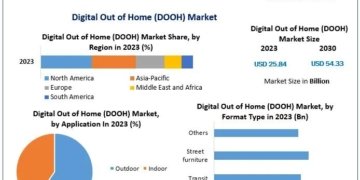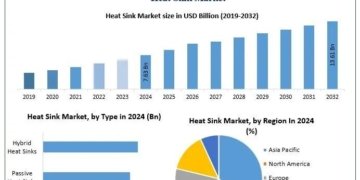Australia Robotics Market Overview
Market Size in 2024: USD 1.5 Billion
Market Size in 2033: USD 6.7 Billion
Market Growth Rate 2025-2033: 16.20%
According to IMARC Group’s latest research publication, “Australia Robotics Market: Industry Trends, Share, Size, Growth, Opportunity and Forecast 2025-2033”, The Australia robotics market size reached USD 1.5 Billion in 2024. Looking forward, IMARC Group expects the market to reach USD 6.7 Billion by 2033, exhibiting a growth rate (CAGR) of 16.20% during 2025-2033.
How National Strategy and AI Integration are Reshaping the Future of Australia Robotics Market
• Driving National Strategy: Australia released its first National Robotics Strategy in 2024. This positions the country as a world leader in developing, manufacturing, and using responsible robotics and automation technologies. The goal is to strengthen competitiveness, boost productivity, and support local communities.
• Powering Productivity Gains: A 1% increase in robotics can lead to a 0.8% increase in overall productivity. This happens by automating high-value manufacturing and enabling production. However, Australia ranks 32nd globally in the adoption of industrial robots, showing there is significant room for growth.
• Enhancing Mining Innovation: Brisbane start-up Australian Droid and Robot (ADR) received investment in 2024 to expand mine-monitoring robot production. This supports safer and more efficient mining operations. Automating future mines will improve productivity and reduce environmental impacts.
• Attracting Industry Investment: Besides mining and construction, 24% of suppliers provide robots for the energy sector, and 17% supply the recycling industry. More businesses are needing automation to overcome technology barriers and improve operational efficiency.
• Strengthening AI Integration: The strategy offers access to a network of top experts in robotics, AI, and design-led manufacturing. This helps companies use modern manufacturing technologies, develop new products, and tackle technology barriers with advanced automation solutions.
Grab a sample PDF of this report: https://www.imarcgroup.com/australia-robotics-market/requestsample
Australia Robotics Market Trends & Drivers:
Australia’s robotics market is growing rapidly, thanks to the government’s National Robotics Strategy launched in 2024. This strategy aims to make Australia a leader in developing, manufacturing, and using responsible robotics and automation technologies. It focuses on improving competitiveness, boosting productivity, and helping local communities by promoting responsible technology use. Minister for Industry and Science Ed Husic announced the strategy at an AI summit in Sydney. He stressed that investing in robotics and automation will help strengthen Australia’s manufacturing sector and create secure jobs.
The strategy has four main themes: national capability, increasing adoption, trust and inclusion, and responsible development and use, along with skills and diversity. These themes create a framework for developing the robotics industry.
Improving productivity is a key reason for adopting robotics in Australia. Research shows that a 1% increase in robotics can lead to a 0.8% increase in overall productivity by automating high-value manufacturing and boosting production efficiency. However, Australia currently ranks 32nd in the world for industrial robot adoption, indicating a lot of room for growth. The government knows that investing in people’s skills along with technology in robotics and automation is crucial for staying competitive. Examples from countries like Germany and Japan show that strategic investments in automation can preserve and create jobs while enhancing industrial competitiveness, providing a guide for Australia’s robotics development.
Industry-specific applications are driving robotics investment in Australia’s key economic sectors. Brisbane start-up Australian Droid and Robot (ADR) received significant funding in 2024 to increase production of mine-monitoring robots. These robots will help make mining operations safer and more efficient while showcasing the practical uses of robotics in critical industries. The energy sector accounts for 24% of robot suppliers, and the recycling industry makes up 17% of the market. This shows a growing demand for automation across various applications. The strategy promotes awareness of the benefits of robotics in crucial sectors like agriculture, advanced manufacturing, and healthcare. It aims to help Australian industries integrate robotics and automation technologies to benefit both workers and communities. This tailored approach is creating specialized market opportunities while tackling unique operational challenges through customized automation solutions.
Browse full report: https://www.imarcgroup.com/australia-robotics-market
Australia Robotics Market Industry Segmentation:
The report has segmented the market into the following categories:
Robot Type Insights:
• Industrial Robots
• Service Robots
• Collaborative Robots (Cobots)
• Autonomous Mobile Robots
• Humanoid Robots
• Others
Application Insights:
• Manufacturing
• Mining
• Healthcare
• Agriculture
• Construction
• Logistics & Warehousing
• Energy
• Others
Component Insights:
• Hardware
• Software
• Services
• Others
Technology Insights:
• Artificial Intelligence
• Machine Learning
• Computer Vision
• Internet of Things (IoT)
• Cloud Computing
• Others
End User Insights:
• Automotive Industry
• Electronics Industry
• Food & Beverage
• Pharmaceutical
• Metal & Machinery
• Chemical Industry
• Others
Breakup by State:
• New South Wales
• Victoria
• Queensland
• Western Australia
• South Australia
• Tasmania
• Northern Territory
• Australian Capital Territory
Recent News and Developments in Australia Robotics Market
• May 2024: Australia released its first National Robotics Strategy, positioning the country as a world leader in developing, manufacturing and using responsible robotics and automation technologies to strengthen competitiveness, boost productivity and support local communities.
• 2024: Brisbane start-up Australian Droid and Robot (ADR) received investment to expand mine-monitoring robot production, supporting safer and more efficient mining operations while demonstrating practical applications of robotics in Australia’s critical mining industry.
• August 2024: The Department of Industry, Science and Resources emphasized that Australian industries are responsibly developing and using robotics and automation technologies, with the strategy providing access to world-leading experts in robotics, AI and design-led manufacturing.
• 2024: Market analysis revealed that 24% of suppliers provide robots for the energy sector and 17% supply the recycling industry, while a growing number of businesses across sectors are seeking automation solutions to overcome technology barriers and enhance operational efficiency.
Note: If you require specific details, data, or insights that are not currently included in the scope of this report, we are happy to accommodate your request. As part of our customization service, we will gather and provide the additional information you need, tailored to your specific requirements. Please let us know your exact needs, and we will ensure the report is updated accordingly to meet your expectations.
Ask analyst for customized report: https://www.imarcgroup.com/request?type=report&id=32682&flag=E
Contact Us:
IMARC Group
134 N 4th St. Brooklyn, NY 11249, USA
Email: sales[@]imarcgroup.com
Tel No:(D) +91 120 433 0800
United States: +1-201971-6302
About Us:
IMARC Group is a global management consulting firm that helps the world’s most ambitious changemakers to create a lasting impact. The company provide a comprehensive suite of market entry and expansion services. IMARC offerings include thorough market assessment, feasibility studies, company incorporation assistance, factory setup support, regulatory approvals and licensing navigation, branding, marketing and sales strategies, competitive landscape and benchmarking analyses, pricing and cost research, and procurement research.
This release was published on openPR.














